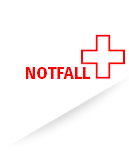Publikationen
NM Brisson, LAN Krahl, M Krämer, JR Reichenbach, GN Duda (2023). Eighteen-Month Changes in Physical Activity, Body Weight, Quadriceps Strength, and Gait Biomechanics during the COVID-19 Pandemic. Medicine and Science in Sports and Exercise (55), 1366-1374
W-T Zhao, K-H Herrmann, R Sibgatulin, A Nahardani, M Krämer, B Heitplatz, V van Marck, S Reuter, JR Reichenbach, V Hoerr (2023). Perfusion and T2 Relaxation Time as Predictors of Severity and Outcome in Sepsis-Associated Acute Kidney Injury: A Preclinical MRI Study. Journal of magnetic resonance imaging: JMRI (58), 1954-1963
S Gräger, R Pfirschke, M Lorenz, D Vilser, M Krämer, H-J Mentzel, K Glutig (2023). Lung ultrasound in children and adolescents with long-term effects of COVID-19: Initial results. Frontiers in Pediatrics (11), 1112881
P-C Krueger, M Krämer, T Benkert, S Ertel, U Teichgräber, M Waginger, H-J Mentzel, K Glutig (2023). Whole-body diffusion magnetic resonance imaging with simultaneous multi-slice excitation in children and adolescents. Pediatric Radiology (53), 1485-1496
M Krämer, M Ingwersen, U Teichgräber, F Güttler (2023). Added value of chest CT in a machine learning-based prediction model to rule out COVID-19 before inpatient admission: A retrospective university network study. European Journal of Radiology (163), 110827
K Glutig, P-C Krüger, T Oberreuther, MD Nickel, U Teichgräber, M Lorenz, H-J Mentzel, M Krämer (2022). Preliminary results of abdominal simultaneous multi-slice accelerated diffusion-weighted imaging with motion-correction in patients with cystic fibrosis and impaired compliance. Abdominal Radiology (New York)
K Glutig, P-C Krüger, T Oberreuther, U Teichgräber, M Lorenz, H-J Mentzel, M Krämer (2022). A novel free-breathing abdominal RAVE T2/T1 hybrid MRI sequence in patients with cystic fibrosis: Preliminary results. European Journal of Radiology (154), 110454
M Aleksiev, M Krämer, NM Brisson, MB Maggioni, GN Duda, JR Reichenbach (2022). High-resolution CINE imaging of active guided knee motion using continuously acquired golden-angle radial MRI and rotary sensor information. Magnetic Resonance Imaging (92), 161–168
JP Fouquet, D Sikpa, Ré Lebel, R Sibgatulin, M Krämer, K-H Herrmann, A Deistung, L Tremblay, JR Reichenbach, M Lepage (2022). Characterization of microparticles of iron oxide for magnetic resonance imaging. Magnetic Resonance Imaging (92), 67-81
NM Brisson, M Krämer, LAN Krahl, A Schill, JR Reichenbach, GN Duda (2022). A novel multipurpose device for guided knee motion and loading during dynamic magnetic resonance imaging. Zeitschrift fur Medizinische Physik, Online ahead of print
K Glutig, H-J Mentzel, FH Prüfer, U Teichgräber, MM Obmann, M Krämer (2021). RAVE-T2/T1 - Feasibility of a new hybrid MR-sequence for free-breathing abdominal MRI in children and adolescents. European Journal of Radiology (143), 109903
MB Maggioni, M Krämer, JR Reichenbach (2021). Optimized gradient spoiling of UTE VFA-AFI sequences for robust T1 estimation with B1-field correction. Magnetic Resonance Imaging (82), 1-8
A Nahardani, S Leistikow, K Grün, M Krämer, K-H Herrmann, A Schrepper, C Jung, S Moradi, PC Schulze, L Linsen, JR Reichenbach, V Hoerr, M Franz (2021). Pulmonary Arteriovenous Pressure Gradient and Time-Averaged Mean Velocity of Small Pulmonary Arteries Can Serve as Sensitive Biomarkers in the Diagnosis of Pulmonary Arterial Hypertension: A Preclinical Study by 4D-Flow MRI. Diagnostics (Basel, Switzerland) (12), 58
M Krämer, MR Kollert, NM Brisson, MB Maggioni, GN Duda, JR Reichenbach (2020). Immersion of Achilles tendon in phosphate-buffered saline influences T1 and T2* relaxation times: An ex vivo study. NMR in Biomedicine, e4288
M Krämer, B Herzau, JR Reichenbach (2020). Segmentation and visualization of the human cranial bone by T2* approximation using ultra-short echo time (UTE) magnetic resonance imaging. Zeitschrift fur Medizinische Physik (30), 51–59
M Krämer, MB Maggioni, NM Brisson, S Zachow, U Teichgräber, GN Duda, JR Reichenbach (2019). T1 and T2* mapping of the human quadriceps and patellar tendons using ultra-short echo-time (UTE) imaging and bivariate relaxation parameter-based volumetric visualization. Magnetic Resonance Imaging (63), 29-36
K Moll, A Gussew, M Nisser, S Derlien, M Krämer, JR Reichenbach (2018). Comparison of metabolic adaptations between endurance- and sprint-trained athletes after an exhaustive exercise in two different calf muscles using a multi-slice 31P-MR spectroscopic sequence. NMR in Biomedicine (31), e3889
M Cleve, M Krämer, A Gussew, JR Reichenbach(2017). Difference optimization: Automatic correction of relative frequency and phase for mean non-edited and edited GABA (1)H MEGA-PRESS spectra. JMR (279), 16–21
M Krämer, AG Motaal, K-H Herrmann, B Löffler, JR Reichenbach, GJ Strijkers, V Hoerr (2017). Cardiac 4D phase-contrast CMR at 9.4 T using self-gated ultra-short echo time (UTE) imaging. J Cardiovasc Magn Reson (19), 39
K-H Herrmann, M Krämer, JR Reichenbach (2016). Time Efficient 3D Radial UTE Sampling with Fully Automatic Delay Compensation on a Clinical 3T MR Scanner. PLoS One (11), e0150371
M Krämer, J Biermann, JR Reichenbach (2015). Intrinsic Correction of System Delays for Radial Magnetic Resonance Imaging. Magn Reson Imaging (33), 491–496
K-H Herrmann, C Gärtner, D Güllmar, M Krämer, JR Reichenbach (2014). 3D printing of MRI compatible components: Why every MRI research group should have a low-budget 3D printer. Med Eng Phys (36), 1373–1380
M Krämer, JR Reichenbach (2014). High resolution T2(*)-weighted Magnetic Resonance Imaging at 3 Tesla using PROPELLER-EPI. Z Med Phys (24), 164–173
M Krämer, K-H Herrmann, J Biermann, S Freiburger, M Schwarzer, JR Reichenbach (2014). Self-gated cardiac Cine MRI of the rat on a clinical 3T MRI system. NMR Biomed (28), 162–167
M Krämer, K-H Herrmann, J Biermann, JR Reichenbach (2013). Retrospective reconstruction of cardiac cine images from golden-ratio radial MRI using one-dimensional navigators. J Magn Reson Imaging (40), 413–422
M Krämer, TH Jochimsen, JR Reichenbach (2012). Functional magnetic resonance imaging using PROPELLER-EPI. Magn Reson Med (68), 140–151




